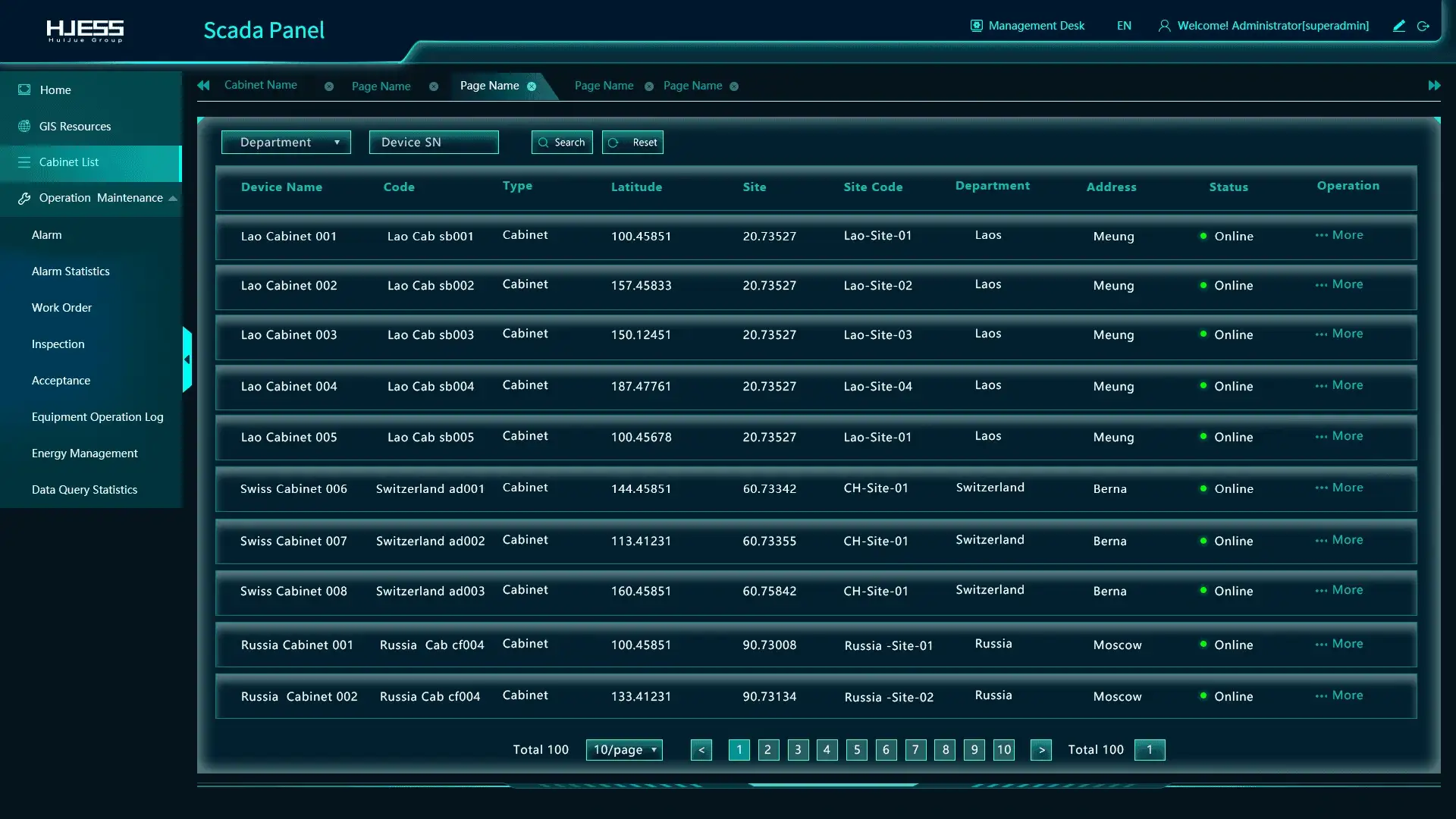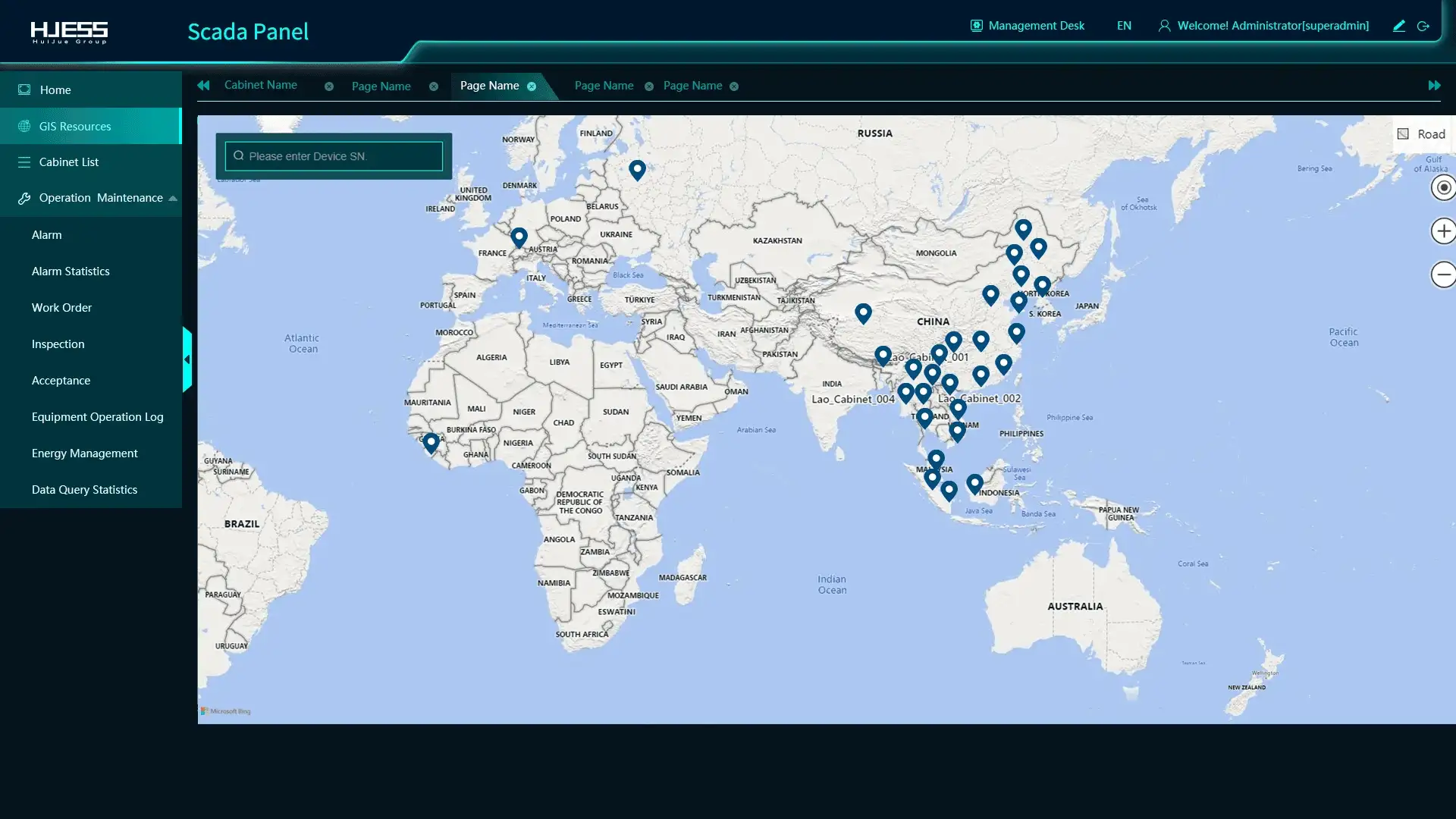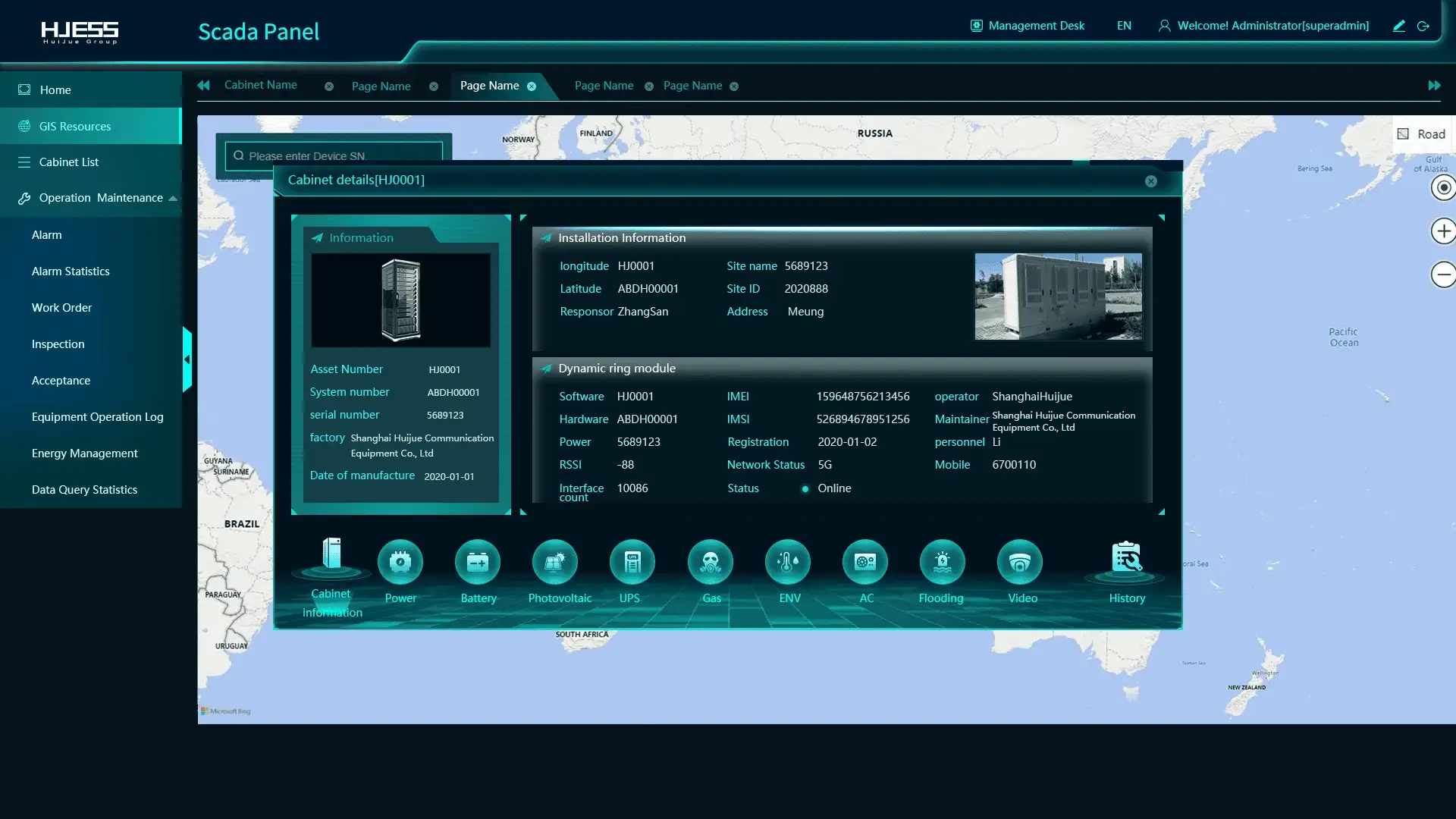Solar Energy storage and charging smart microgrid system
The application scenario of light-storage-charge by Huijue Group is a typical application of energy storage in microgrids. It consists of three core components – photovoltaic power generation, energy storage batteries, and charging piles. These three parts form a microgrid, utilizing photovoltaic power generation to store electricity in energy storage batteries. When needed, the energy storage batteries supply electricity to charging piles. Through this light-storage-charge system, the clean energy of solar power is transferred to the power batteries of vehicles for driving. According to demand, integrated light-storage-charge stations can achieve two operating modes: grid-connected and off-grid. When integrated into the grid, besides receiving energy from photovoltaic solar panels, energy storage batteries charge during low electricity prices and discharge during high prices, reducing charging costs and smoothing out peak demand. It also compensates for the intermittency of solar power generation. When the grid is down, the light-storage-charge system can switch to off-grid mode to provide emergency charging for new energy vehicles.
The solar energy storage and charging smart microgrid system is composed of Charging (overcharging) arilities, Car shed photovoltaic power generation system, energy storage and charging integrated cabinet, and scheduling and monitoring system.
The application scenario of light-storage-charge by HuiJue Group is a typical application of energy storage in microgrids. It consists of three core components – photovoltaic power generation, energy storage batteries, and charging piles. These three parts form a microgrid, utilizing photovoltaic power generation to store electricity in energy storage batteries. When needed, the energy storage batteries supply electricity to charging piles. Through this light-storage-charge system, the clean energy of solar power is transferred to the power batteries of vehicles for driving. According to demand, integrated light-storage-charge stations can achieve two operating modes: grid-connected and off-grid. When integrated into the grid, besides receiving energy from photovoltaic solar panels, energy storage batteries charge during low electricity prices and discharge during high prices, reducing charging costs and smoothing out peak demand. It also compensates for the intermittency of solar power generation. When the grid is down, the light-storage-charge system can switch to off-grid mode to provide emergency charging for new energy vehicles.
Photovoltaic System:
Utilizing nearby rooftop photovoltaic panels and photovoltaic panels on parking lot canopies, multiple photovoltaic components are converged and connected to a photovoltaic DC combiner box, then linked to the grid via photovoltaic inverters. In off-grid mode, the photovoltaic system generates electricity directly on-site, reducing reliance on the grid. Off-grid photovoltaic power generation systems effectively address issues related to the generation, discharge, supply, and conversion of energy during transmission of solar photovoltaic components, ensuring the reliability, economy, environmental friendliness, and safety of the entire system’s electricity generation, thus enabling the stable operation of the power station.
Energy Storage System (ESS):
The energy storage system comprises battery storage compartments and equipment compartments. The battery system is constructed with individual battery cells as the smallest unit, forming battery modules and clusters, with battery capacity configured according to on-site requirements. The equipment compartment houses energy storage inverters (PCS), AC distribution cabinets, DC distribution cabinets, fire suppression systems, EMS & environmental monitoring cabinets, and more.
The energy storage system connects to the AC bus of the system, enhancing energy utilization efficiency and ensuring the balance between power generation and consumption in the power system.
Charging Station:
The charging station interacts with users through QR code scanning for charging. The system includes intelligent monitoring and metering. The intelligent controller of the charging station is equipped with measurement, control, and protection functions, such as operation status detection, fault status detection, and coordinated control of charging and discharging processes. AC output is configured with an AC smart energy meter for AC charging metering, with excellent communication capabilities. Metering information can be uploaded separately to the charging station’s intelligent controller and the network operation platform via RS485 communication.
 car shed photovoltaic power generation system:
Using nearby rooftop photovoltaics and parking lot canopy photovoltaics, multiple photovoltaic modules are connected to the photovoltaic DC combiner box, connected to the grid through photovoltaic inverters, and the off-grid photovoltaic power generation system effectively solves the power generation, discharge, and The problem of power supply and energy conversion during the transmission process ensures the reliability, efficiency and safety of the entire system’s power generation, allowing the power station to operate stably.
car shed photovoltaic power generation system:
Using nearby rooftop photovoltaics and parking lot canopy photovoltaics, multiple photovoltaic modules are connected to the photovoltaic DC combiner box, connected to the grid through photovoltaic inverters, and the off-grid photovoltaic power generation system effectively solves the power generation, discharge, and The problem of power supply and energy conversion during the transmission process ensures the reliability, efficiency and safety of the entire system’s power generation, allowing the power station to operate stably.
Energy Storage And Charging Integrated Cabinet: Based on the energy storage system, the auxiliary equipment of the station can be operated independently of the mains power to reduce the impact on the grid operation. According to the characteristics of the photovoltaic power generation period, a complete optimization processing logic is designed for the power generation charging and discharging business, and the ultra-high power V2G technology has been expanded. The application realizes the ecological operation mode of microgrid, which can effectively reduce carbon emissions, adjust the peak load of electricity load and complete the demand-side response to peak electricity consumption.
EMS Energy Management System: 1. Data collection, data analysis and fault recording. 2. Intelligent management of energy storage system, charge and discharge control. 3. System fault alarm and protection management.



